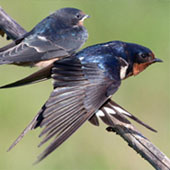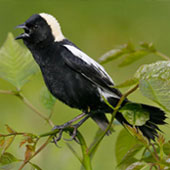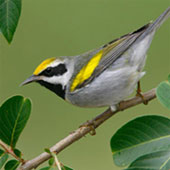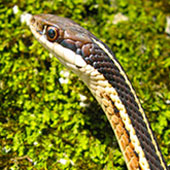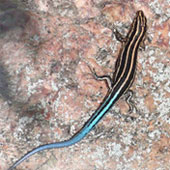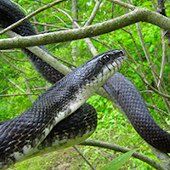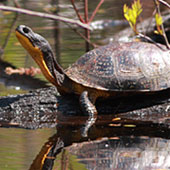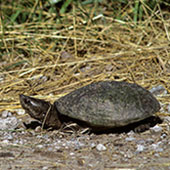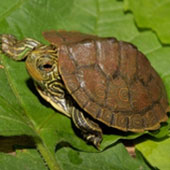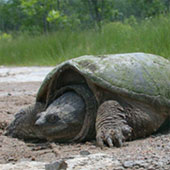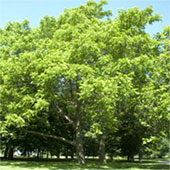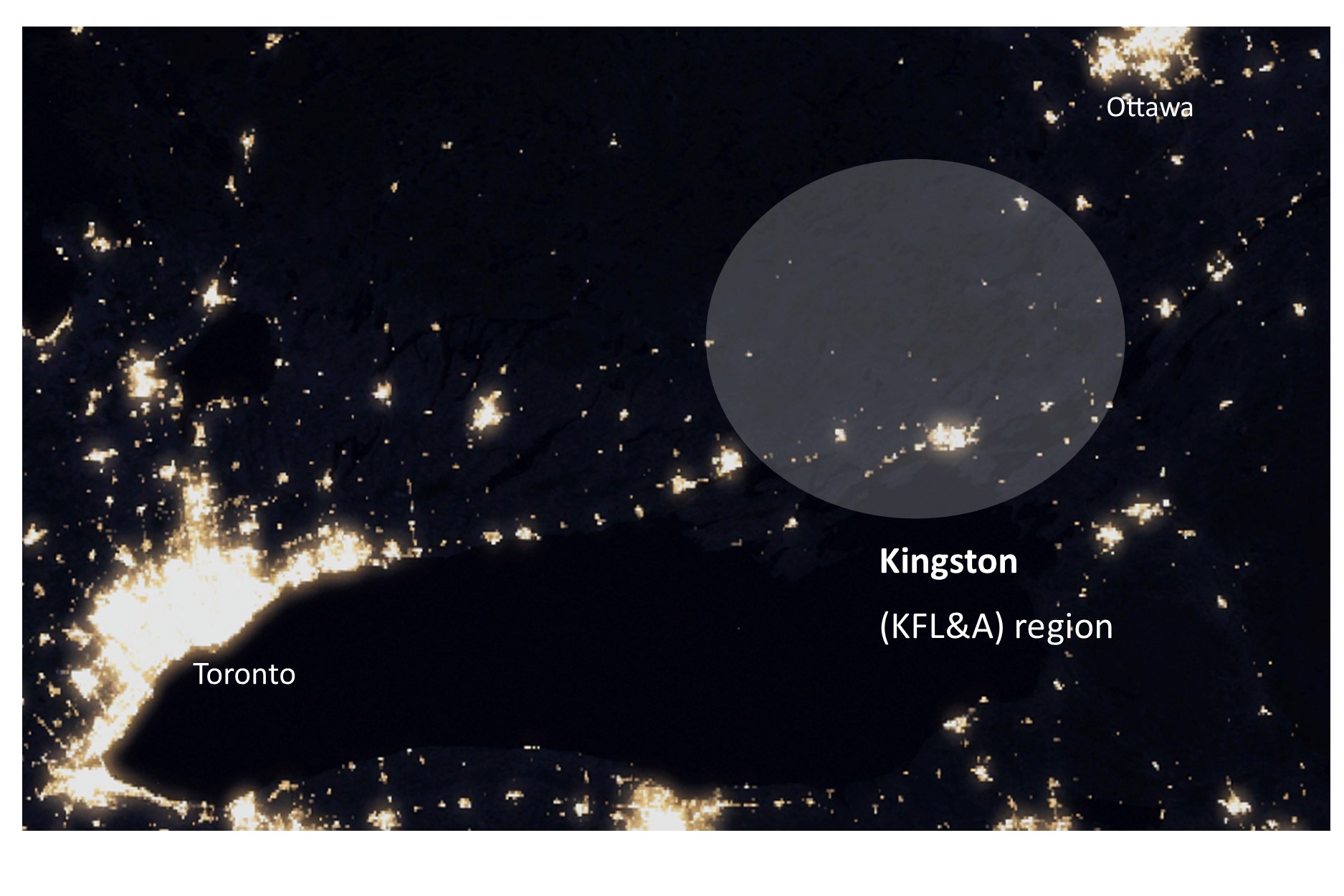
Sandwiched between major urban centers, the KFL&A region (Kingston, Frontenac, Lennox and Addington) has seen less development.
Unique Location
The KLFA region resides within the Algonquin to Adirondack Nature region (A2A). Recoginzed globally by two designated UNESCO Biosphere Reserves: Frontenac Arch Biosphere and Champlain-Adirondack Biosphere Reserve.
The Frontenac Arch Biopshere region overlaps with the traditional territories of the Anishinaabe (Algonquin) and Haudenosaunee (Iroquois) lands and covers an area from Brockville and Gananoque, and extending north of Kingston including Harrowsmith, Verona, and Westport. It encompasses an area of approximately 2700 sq. km.
Fourth Lake Nature Reserve. Photo by Marc Sandaluk

Unique Geology
The Limestone Plain is situated between Napanee and Kingston, and runs northwards to Tamworth. This 178,000 hectares area features wetlands, grasslands and alvar. Limestone plain landscapes are characterized by a limestone base near the surface, which makes it difficult for vegetation to take root. These unique and rare landscapes provide an excellent habitat for grassland birds and adapted plants that can tolerate the extremes of wet and dry.
Alvar landscape, Odessa, Ontario. Photo by Paul Mackenzie
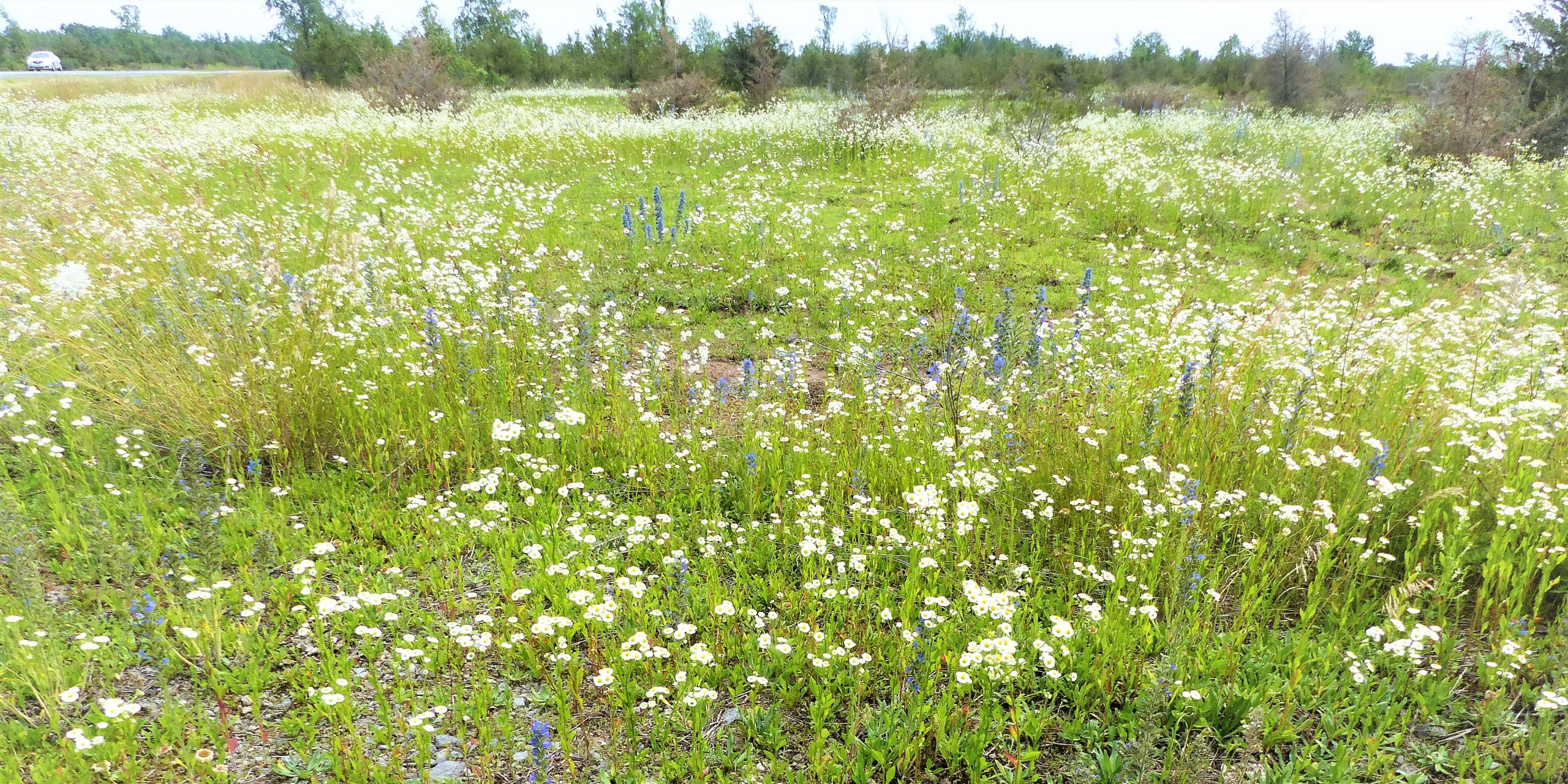
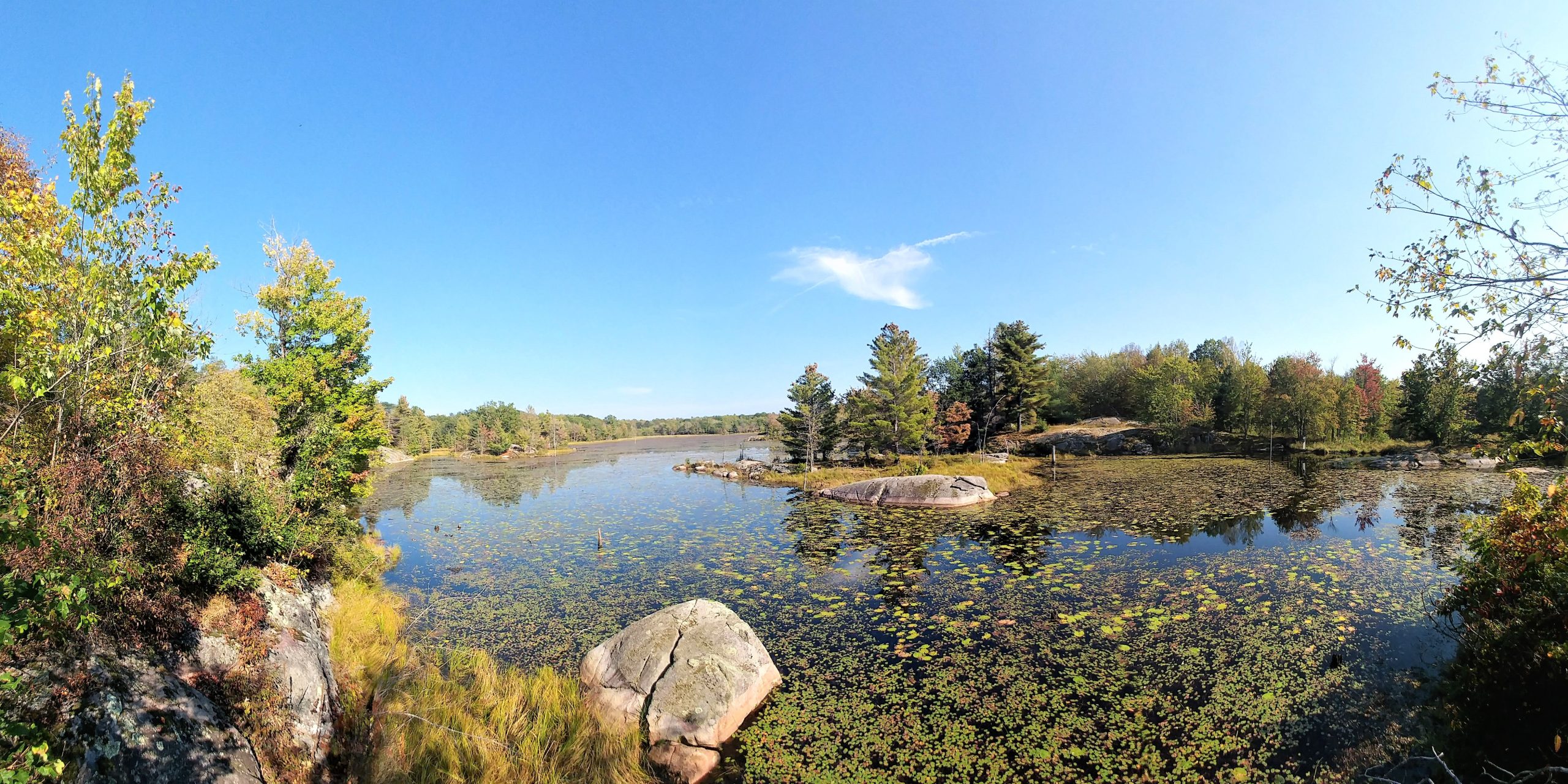
The Canadian Shield, dipping down in sections as far south as the city of Kingston, is a small section of a massive geological formation that stretches from Ontario in the south to the Canadian Arctic in the north. Rocky granite outcrops made for poor farmland, although plenty of logging has taken place over the years. Characteristics include lakes, wetlands, open rocky ridges and cool shaded forest.
Photo by Emma Ross
The Land Between is the area between the Napanee Plain and the Canadian Shield. These transition zones are referred to as an “ecotone” — having features unique to itself. This area represents the boundaries of species on each side of it. The mixing of the two zones results in a great deal of biodiversity.
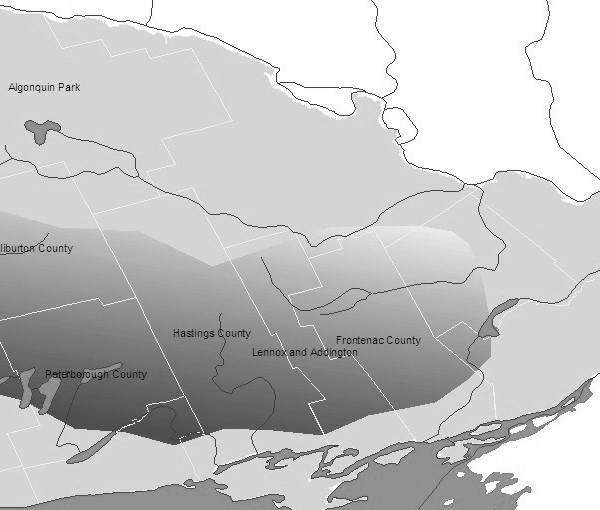
Unique Species
The intersection of the Algonquin highlands and Adirondack Mountains (north-south) and the St. Lawrence Valley (east-west) results in a diversty of flora. The main forest types present in the KFLA region are Mixwood Plains (Great Lake – St. Lawrence) and Boreal Shield (boreal).
Alvars, such as the Napanee Plain, are unique and often open landscapes that may be classified as open, shrub or treed. Alvars are noted to be important bird and biodiversity areas.
Photo: Prairie Smoke, Odessa, Ontario. Photo credit Paul Mackenzie
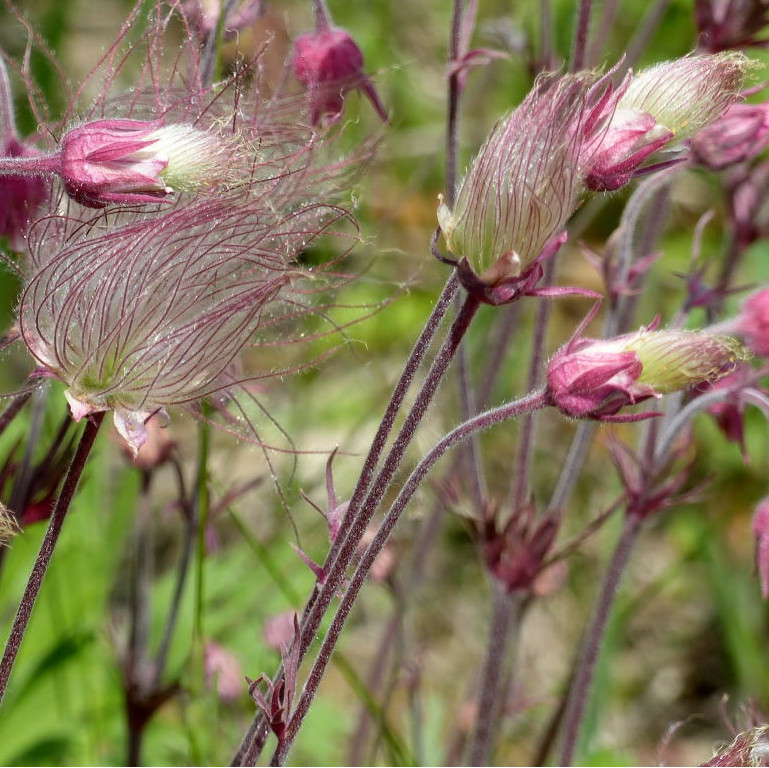
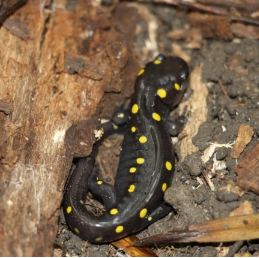
The Canadian Shield is characterized by diverse landscapes including large tracts of unfragmented forest (interior forest), wetlands, riparian areas and lakes. This variation creates uniqe habitats and niche opportunities for a great variety of species.
Photo: Yellow Spotted Salamander. Photo credit Janet Elliott
Interested in joining the effort to help conserve our unique local nature?
See the ways to help page for more

Barn Swallow Hirundo rustica
Description: Males have a glossy steel-blue back and upper wings, a rusty-red forehead and throat, a short bill and a broad blue breast band above its tawny underbelly, with long tail feathers that form a distinctive, deep fork. These birds nest almost exclusively on built structures such as open barns, bridges, and in culverts.
Level of Risk: Threatened provincially and nationally
Bobolink Dolichonyx oryzivorus
Description: A medium-sized, grassland bird. Breeding males are black, with white on their backs and a yellow patch on the back of the neck, while females and non-breeding birds are brownish and stripey. In Ontario, Bobolinks are highly dependent on cultural hayfields and pastures.
Level of Risk: Threatened provincially and nationally
Common Nighthawk Chordeiles minor
Description: A medium-sized bird, with cryptic plumage, long wings, a wide mouth and a short bill. They are ground-nesting birds, found in open or semi-open areas such as farmland, open woodlands or even urban rooftops.
Level of Risk: a species of Special Concern provincially and Threatened nationally
Eastern Meadowlark Sturnella magna
Description: A medium-sized, grassland bird. A brown and yellow bird with a bright yellow throat and belly, a black “V” on its breast and white flanks with black streaks, and with a strong beak and a relatively short tail. In Ontario, Eastern Meadowlarks are highly dependent on cultural fields and pastures.
Level of Risk: Threatened provincially and nationally
Eastern Whip-poor-will Antrostomus vociferus
Description: A medium-sized, ground-nesting bird, with mottled gray and brown feathers. A species that is active at dusk and in the dark, it is more often heard than seen.
Level of Risk: Threatened provincially and nationally
Eastern Wood-Pewee Contopus virens
Description: A small forest songbird, they are olive-gray on their upper parts, with pale undersides, and pale bars on their wings. They have a distinctive “pee-a-wee” song
Level of Risk: a species of Special Concern provincially and nationally
Golden-winged Warbler Vermivora chrysoptera
Description: A small songbird in the wood-warbler family, they are gray, with pale undersides, yellow wing patches and crown. Males have a black throat and mask, where females have pale gray.
Level of Risk: a species of Special Concern provincially and Threatened nationally
Wood Thrush Hylocichla mustelina
Description: A medium-sized songbird, they are rusty-brown, and have white below with dark spots on breast and sides. They are a species of mature deciduous and mixed woodlands.
Level of Risk: a species of Special Concern provincially and Threatened nationally
Eastern Ribbon Snake Thamnophis sauritus
Description: A slim snake, with three bright yellow stripes running the length of its body, in sharp contrast to a dark background color. These snakes are slimmer, have longer tails, and narrower heads than the similar Garter Snake, and are typically found near wetlands or water.
Level of Risk: a species of Special Concern provincially and the Great Lakes population is Special Concern nationally
Five-lined Skink Plestiodon fasciatus
Description: A small lizard with dark black or gray color, and five white to yellow stripes the length of its body. Adult males have broad heads with reddish-orange jaws and chin, and juvenile animals have bright blue tails.
Level of Risk: Southern Shield population is Special Concern provincially and Great Lakes-St. Lawrence population is Special Concern nationally
Gray Ratsnake Pantherophis spiloides
Description: The gray ratsnake can grow up to two meters long. Juveniles show a distinct pattern whereas mature snakes are black showing only faint patterns. A climber, the gray ratsnake is at home on the ground or treetops. Any environment that is rich in rodents is suitable.
Level of Risk: The Frontenac Axis population is Spcecial Concern provincially and the Great Lakes-St.Lawrence population Threatened nationally
Blanding’s Turtle Emydoidea blandingii
Description: A medium-sized turtle, with a smooth, domed shell. This turtle has a bright yellow throat and jaw.
Level of Risk: Threatened provincially and the Great Lakes/ St.Lawrence population is Endangered nationally
Eastern Musk Turtle (also known as Stinkpot Turtle) Sternotherus odoratus
Description: A small, aquatic fresh-water turtle. The turtle exudes a musky odor from glands located at the margins of its shell.
Level of Risk: a species of Special Concern provincially and nationally
Northern Map Turtle Graptemys geographica
Description: A turtle with shell markings that resemble contour lines on a map. The shell is typically olive green and has a distinct centre keel, while both the head and legs have yellow lines on a dark background.
Level of Risk: a species of Special Concern provincially and nationally
Snapping Turtle Chelydra serpentina
Description: Canada’s largest turtle, with large dark shells (black, olive or brown), often covered in algal growth. Their shell is keeled, and their tails have triangular crests along their length.
Level of Risk: a species of Special Concern provincially and nationally
Monarch Danaus plexippus
Description: Large and bright orange, with black lines and white spots, this is one of our most easily recognized butterflies. Larvae feed exclusively on milkweed, and adults migrate to Mexico to overwinter, their offspring returning to Ontario to continue the cycle.
Level of Risk: a species of Special Concern provincially and nationally (but under consideration for status change to Endangered federally)
Butternut Juglans cinerea
Description: A medium-sized, deciduous tree that is in the Walnut family. The tree has compound leaves and produces edible nuts in the fall.
Level of Risk: Endangered provincially and nationally
Wood Duck boxes at Meyer Woods
In 2010, five Land Conservancy members installed four wooden nesting boxes atop long poles in the ponds at Meyer Woods. The boxes were provided by Ducks Unlimited and we report our annual findings to them. The hope is that Wood Ducks will eventually use these boxes for nesting.


| 2022 |
|
| 2021 |
|
| 2020 |
|
| 2019 |
|
| 2018 |
|
| 2017 |
|
| 2016 |
|
| 2015 |
|
| 2014 |
|
| 2013 |
|
| 2012 |
|
| 2011 |
|
Minnows
So unlikely: so many feet above
the lake, in ponds filled with nothing but rain
minnows are springing half a finger length
out of the water, little Gothic windowsflashing and sinking back into rings of ripples.
How did they get here? — How did any of us?
A biologist friend explains they must have climbed
the tiny streams whose dry black beds run inches deepin spring and fall; or birds may have dropped them
poetic beginnings, romantic but scientific.
Until she said they’d be there I never saw them.
What else lives in here? — A lifetime couldn’t count them all yet once there wasn’t a single living thing
on earth: chemicals, complex mixes, lightning, and
something began remaking itself, stubborn,
creeping like happiness across the landscape.
John Donlan
from Spirit Engine, Brick Books, 2008
Hiking my Home Place
Observations from Gray Merriam
Follow the river upstream away from the gurgling riffle that fills the Otter Pool. Across the exposed bedrock – gneiss and mica schist. Climb up the gentle slippery slope of the tiny batholith to the moss and lichen gardens in the open veins of the rock. To where the moose cow and calf spent one night three winters ago.
And move on to where the beavers cut the gummy pines & dragged them down to their sticky lodge by the shore. Mouths full of pine pitch.
Upstream the silty shore slopes easily into the buttonbush, sweet gale and dogwoods. Shrubby lacework edging the river’s shore below the white pines and oaks.
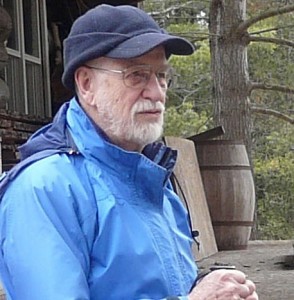
Turning inland at the colony of fringed polygala on Beaver Point, I come to where the paper birch used to grow before the beavers felled them all to harvest the branches. All the pruned trunks towed home behind the canoe fed winter fires.
Steeply past the oak sculpted by the pileated woodpeckers. A natural art piece rising from a graying bed of sculpted chips. Not waste. Step one on the journey of nutrient molecules into the return flow to new oak sprouts. Without the flow from decomposition, the flow of juvenile nutrients from bedrock would be too slow. So would the flow from oaks into acorns. And the growth of sprouting acorns.
The slope angles up steeply and the footing is unsure. The landscape of riverside marshes spreading along the base of the slope refreshes senses above the feet.
Next springtime all the little lagoons in those riverine marshes will become frog factories. But the bitterns and the herons will see them as snack bars.
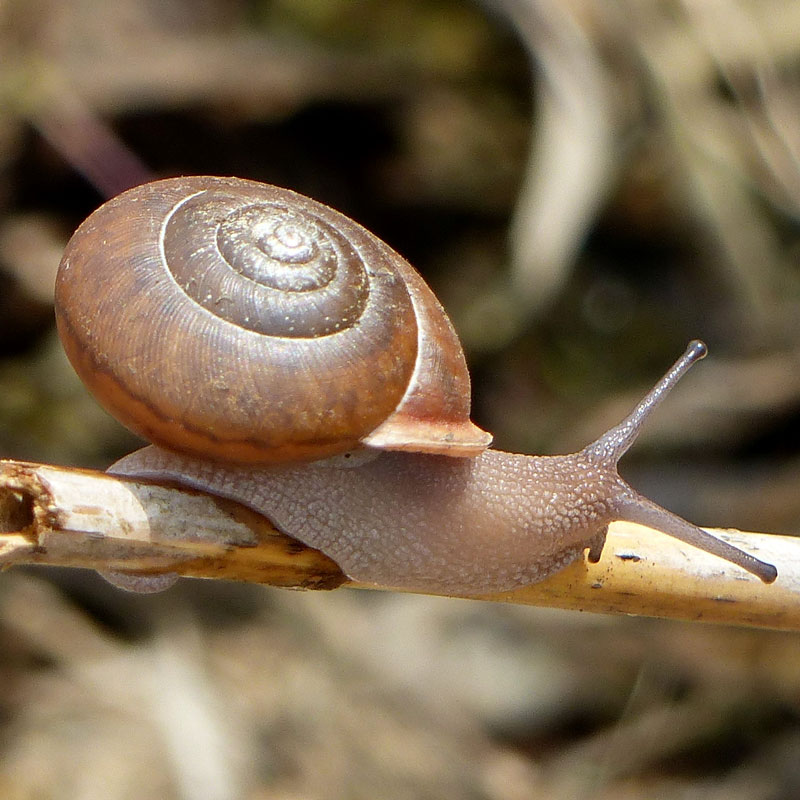
On top of the ridge I hit the “middle trail” and head farther upstream just below the crest of the ridge. White pines with massive trunks force my gaze upward. A few have fallen from old age or under attack by fierce winds.
Healthy neighbour trees tried to catch one giant on the way down.
The fallen matriarch snapped but still could not find rest on the ground. So it became a silent escalator for grouse and turkeys going to roost. Underneath is no place to linger.
A sudden snort and careless crashing tells of a disturbed doe and fawn as they charge upstream along the trail. Healed bark skinned on a blue beech sapling marks the fawn’s male parentage.
Following the deer down a cut through the lower ridge puts me in a seasonally flooded basin. Connected by high water to the river in spring but dry enough for slippers now. A pulsed habitat.
Turning north sees me scrabbling on a slope steep enough for cardiac testing. My hiking poles bite in and my arms help me climb. Up to the “high trail”. The winter ski trail along the very crest of the high ridge.
Heading away from the setting sun the ski trail tunnels under the tree canopy. Sky-high vistas reach from under marvelous white pines, matriarchal sugar maples and fast-grown ashes. The Salmon River to the south and Kennebec Lake to the north.
Red oak tops still bear the marks of the highest density of gypsy moth infestation in Ontario. Recovery has taken since the 70’s and 80’s. Some have struggled back, some have lost their tops and some remain only as skeletal snags in the canopy and clearings. Ashes and blue beech have filled many of the gaps.
Openings left in the canopy from the gypsy moths have encouraged white pine seedling, rather like the effects of fire. Pines arrayed from tiny seedlings to polewood search with their roots for nutrients from the Precambrian granite and the decomposers.
Among the white pines are many with branches all the way down to eye level. They grew in openings without crowding neighbours to force them upward. Pasture pines. This entire peninsula was unimproved grazing land until 1970. The remarkably beautiful forest that I now enjoy has restored itself in about 44 years.
The entire surrounding township was clear-cut in the late 1800’s. A political contribution to the fortunes of a lumber baron. In paintings from 1932, the hills north of Kennebec (then Cross) Lake were shown bald. Grass without trees. Now fully reforested by natural processes.
It is autumn and scattered across the forest floor little raised domes of fallen leaves hide this year’s mushrooms. Fungus sprouting up out of the soil to produce and distribute spores. Spore immigrants for new fungal colonies. Most fungal work is done below the litter. The decomposer factory is the mat of interconnected, hair-like cells, spread over huge areas. Wrapping and connecting into roots, the fungal web feeds the trees and many other plants.
My home place is wondrous with questions uncountable. Enough curious splendor for mylifetime and more.
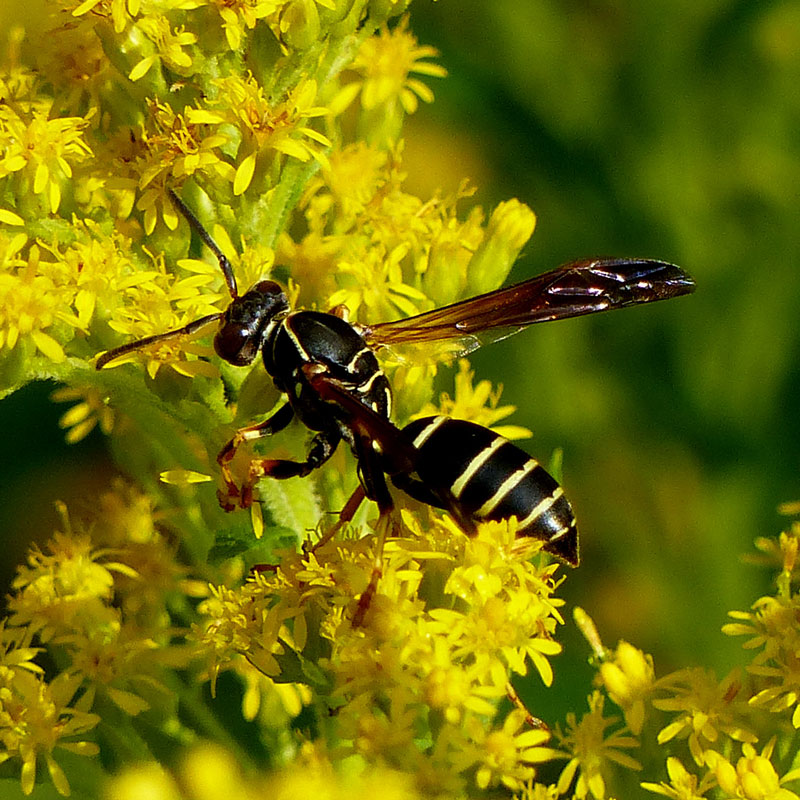
Follow Us

Web hosting generously provided by WTC Communications.

